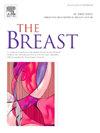Baseline neutrophil-lymphocyte ratio (NLR) predicts toxicity and survival in HR+/HER-2 breast cancer patients treated with CDK4/6 inhibitors
IF 7.9
2区 医学
Q1 OBSTETRICS & GYNECOLOGY
引用次数: 0
Abstract
The neutrophil-to-lymphocyte ratio (NLR) is a marker of systemic inflammation that has been associated with prognosis in various malignancies. Its role in predicting toxicity and survival in patients with hormone receptor-positive, human epidermal growth factor receptor 2-negative (HR+/HER2−) metastatic breast cancer treated with cyclin-dependent kinase 4/6 (CDK4/6) inhibitors remains unclear.
Methods
This retrospective cohort study included 2218 patients with HR+/HER2− metastatic breast cancer treated with palbociclib or ribociclib between 2017 and 2024, using data from Israel's largest health maintenance organization. We compared baseline NLR values between patients who developed grade 4 neutropenia (absolute neutrophil count <0.5 × 109/L) and those with higher counts during the first three months of treatment. Additional comparisons were conducted using different neutropenia thresholds. We also assessed the association between baseline NLR (cut-off 2.5), progression-free survival (PFS), and treatment-related adverse events.
Results
Patients with grade 4 neutropenia had significantly higher baseline NLR values compared to those with higher neutrophil counts. The effect size was large in all comparisons. Patients with an NLR of ≥2.5 had a shorter median progression-free survival (PFS) than those with an NLR of <2.5. Hepatotoxicity was more frequently observed in patients with NLR <2.5, while the incidence of dermatologic adverse events was similar across groups.
Conclusions
Elevated baseline NLR is associated with an increased risk of severe neutropenia and shorter progression-free survival in patients treated with CDK4/6 inhibitors. These findings highlight a potential link between systemic inflammation and treatment outcomes, suggesting that NLR may be a valuable predictive biomarker in this setting.
基线中性粒细胞-淋巴细胞比率(NLR)预测使用CDK4/6抑制剂治疗的HR+/HER-2乳腺癌患者的毒性和生存率
中性粒细胞与淋巴细胞比值(NLR)是一种与各种恶性肿瘤预后相关的全身炎症标志物。在使用细胞周期蛋白依赖性激酶4/6 (CDK4/6)抑制剂治疗的激素受体阳性、人表皮生长因子受体2阴性(HR+/HER2−)转移性乳腺癌患者中,其预测毒性和生存率的作用尚不清楚。方法本回顾性队列研究纳入了2218例2017年至2024年间接受帕博西尼或核糖西尼治疗的HR+/HER2 -转移性乳腺癌患者,数据来自以色列最大的健康维护组织。我们比较了4级中性粒细胞减少患者(绝对中性粒细胞计数& 0.5 × 109/L)和治疗前三个月中性粒细胞计数较高患者的基线NLR值。使用不同的中性粒细胞减少阈值进行了额外的比较。我们还评估了基线NLR(截止值2.5)、无进展生存期(PFS)和治疗相关不良事件之间的关系。结果4级中性粒细胞减少患者的NLR基线值明显高于中性粒细胞计数较高的患者。在所有比较中,效应量都很大。NLR≥2.5的患者的中位无进展生存期(PFS)短于NLR为2.5的患者。肝毒性在NLR患者中更为常见<;2.5,而皮肤不良事件的发生率在各组之间相似。在接受CDK4/6抑制剂治疗的患者中,基线NLR升高与严重中性粒细胞减少的风险增加和无进展生存期缩短相关。这些发现强调了全身性炎症和治疗结果之间的潜在联系,表明NLR可能是这种情况下有价值的预测性生物标志物。
本文章由计算机程序翻译,如有差异,请以英文原文为准。
求助全文
约1分钟内获得全文
求助全文
来源期刊

Breast
医学-妇产科学
CiteScore
8.70
自引率
2.60%
发文量
165
审稿时长
59 days
期刊介绍:
The Breast is an international, multidisciplinary journal for researchers and clinicians, which focuses on translational and clinical research for the advancement of breast cancer prevention, diagnosis and treatment of all stages.
 求助内容:
求助内容: 应助结果提醒方式:
应助结果提醒方式:


